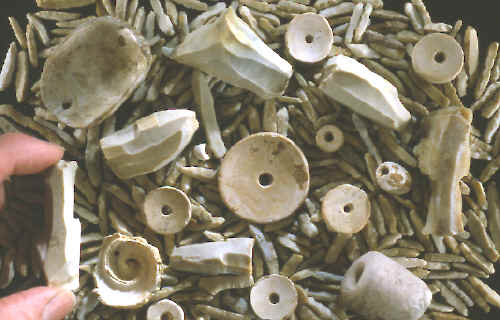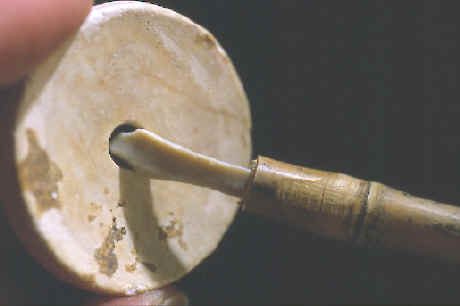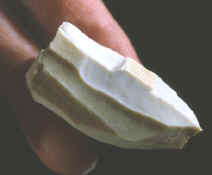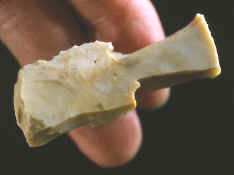|
|
|
|
|
|
"The earliest remains of
man are associated with the implements of his manufacture in which holes
have been artificially perforated"----J.D.
McGuire 1896. Drilling or perforating materials such as bone, shell, ivory, antler, stone or wood is a technological skill that was first invented in the distant past archaeological record. The earliest examples date to a period in time when Neanderthals were still living in Europe and the Near East. The oldest scientifically recognized drilled beads were made of ostrich eggshells. They were discovered in an early Later Stone Age stratum in Border Cave, in South Africa and date to sometime between 45,000 and 33,000 years ago. |
|
|
The first drill must have been developed from an awl. An awl is defined as a small pointed tool for piercing holes in leather, wood and other soft materials. The first drill was probably held in one hand against the material to be drilled and simply turned back and forth until a hole was bored through. |
|
|
|
|
Large numbers of drilled objects begin to appear 34 to 28 thousand years ago during the Aurignacian period in Europe. Excavations in caves and open air sites show that an explosion of sudden and innovative cultural changes took place. People begin to use musical instruments which indicates possible ceremony, ritual and dance. Plus all forms of art appears at this time which signifies the full emergence of modern symbolic expression. Personal adornment in the form of pierced objects also becomes evident in abundance at this time. Bead making and the technology to drill holes has been an important part of human development and social structures for a long time. |
|
| CONTINUE ON TO PAGE TWO | |
|
"REFERENCES"
1896,
"A Study of the Primitive Methods of Drilling", by J.D. McGuire,
pp. 707, 721, 734, 737. |
|






